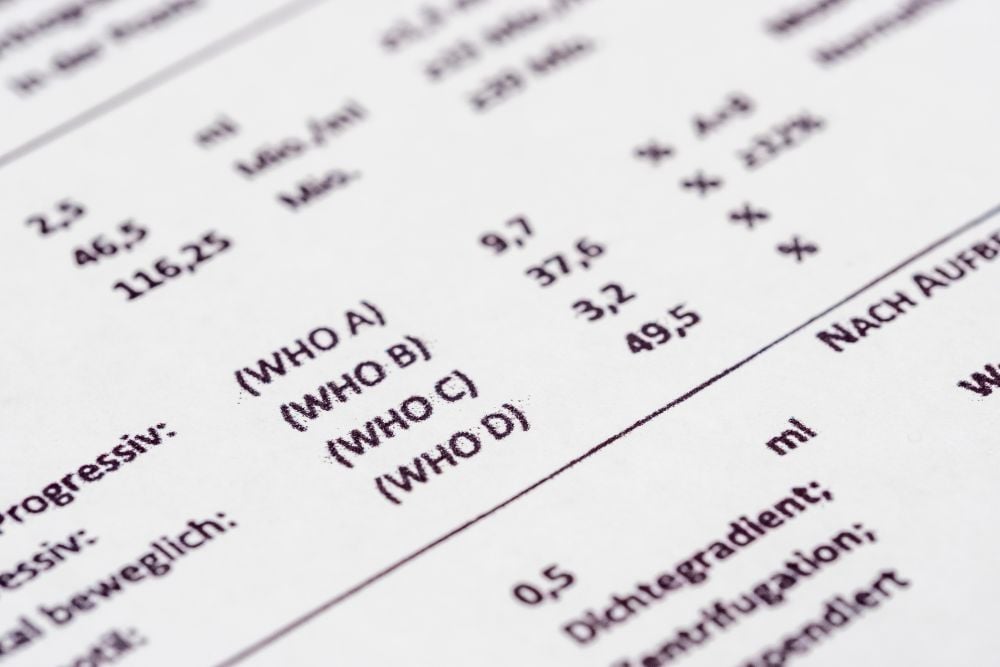Understanding Semen Analysis: Assessing Male Fertility Potential

Infertility plays no favorites, affecting men and women equally. If conception is your goal, men should request a semen analysis, which measures their sperm quantity and quality, as well as detect other concerns. This simple process can help you to identify any issues that may prevent you from having children.
Semen Analysis: A Basic Overview
A semen analysis is a test that examines and measures the count, quality, and other parameters of a man’s sperm. It is one of the first steps to detect male fertility issues. Many fertility clinics perform a Complete Semen Analysis (CSA), considered the most complete evaluation of ejaculated sperm. Integral to male fertility testing, it’s generally the first and only test ordered. However, these results are only guidelines, and may not indicate significant male factor issues.
The process entails a semen sample being collected – via masturbation or a condom – and evaluated in a lab. As sperm counts can vary from sample to sample, you’ll likely need 2 or 3 analyses for an accurate baseline. Before testing, you’ll require 2-5 days of abstinence from ejaculation, which will provide the most accurate measurement.
What Factors Determine Sperm Health?
The World Health Organization (WHO) defines male fertility according to the following parameters:
-
A semen volume of 1.5-5.0 ml - A sperm count of over 20 million sperm per ml
- A sperm motility rate (i.e., the percentage of actively swimming sperm) of 50% or more
- A normal sperm morphology rate (i.e., the percentage of normally-shaped sperm) of 30% or more
- Minimal sperm clumping
- Minimal presence of white or red blood cells
- Minimal hyperviscosity
Additional Semen Analysis Techniques
Anti-Sperm Antibody Test-SpAb
The SpAb test locates antibodies, special proteins that fight against sperm in blood, vaginal fluids, or semen. Developing due to testicular injuries, infection, or surgery, these antibodies can damage or kill sperm, disrupting fertilization. With SpAb, a sample of sperm is taken and mixed with a substance that binds only to the affected sperm. This test is not considered as clinically valuable as the CSA.
Retrograde Semen Analysis
With a spinal cord injury or if taking certain medications, ejaculate can flow backward into the bladder, also known as retrograde ejaculation. With retrograde semen analysis, sperm is taken from the bladder and undergoes sperm washing, in which it’s carefully washed and concentrated. The sperm is then ready for fertility treatment, typically intrauterine insemination (IUI) or in vitro fertilization (IVF). You may also undergo a post-ejaculate urine test (PEU), in which you provide both a specimen and urine sample.
Viability Testing
With this technique, a special stain is used to determine if sperm is viable in the absence of sperm motility.
High-Speed Centrifugation
Should sperm not appear, the specimen is spun down in a centrifuge, a machine that spins and separates fluids. If even a few sperm appear, they can be used for IVF.
Sperm DNA Integrity Analysis (SCSA)
SCSA examines the sperm’s interior to determine how well its DNA holds together in the presence of external forces. If the DNA easily breaks apart, it can be a sign of DNA fragmentation, which is associated with recurrent miscarriages.
Sperm Penetration Assay (SPA)
SPA is used to determine if a man’s sperm can penetrate a female egg, as this is vital for fertilization. Often ordered with IVF, it’s performed for low fertilization rates developing without an explanation.
Monitor Male Infertility With Semen Analysis
Among its uses, a semen analysis can identify a wide range of male infertility concerns. If you’d like to schedule a semen analysis or have general fertility questions, please schedule a consultation with us today.






